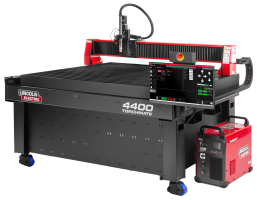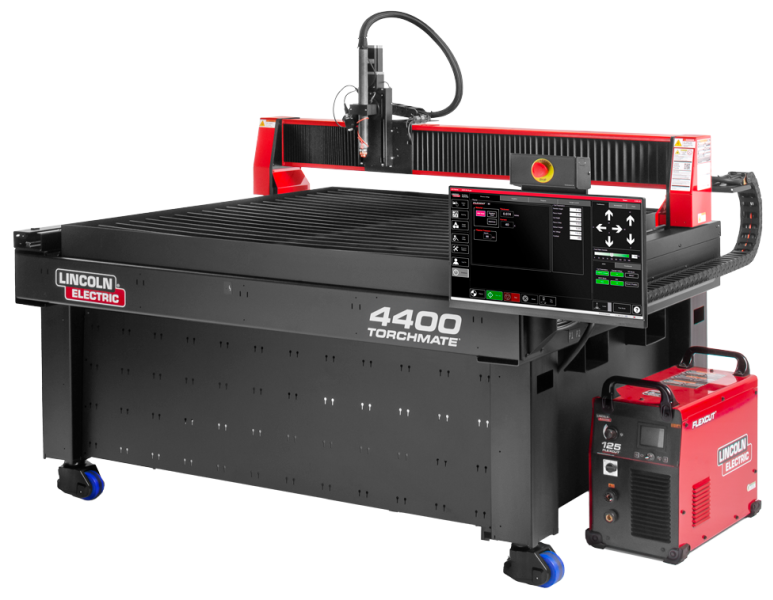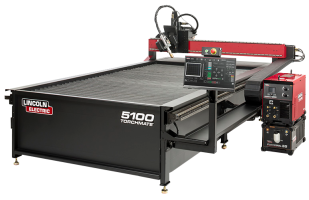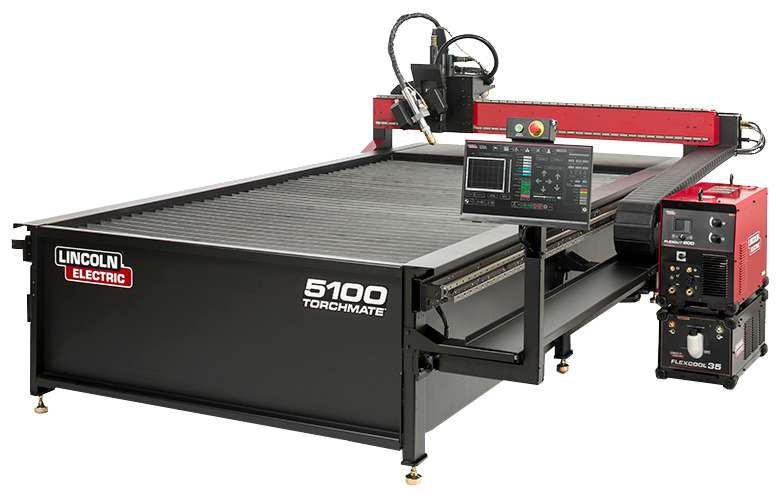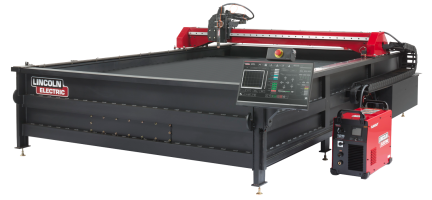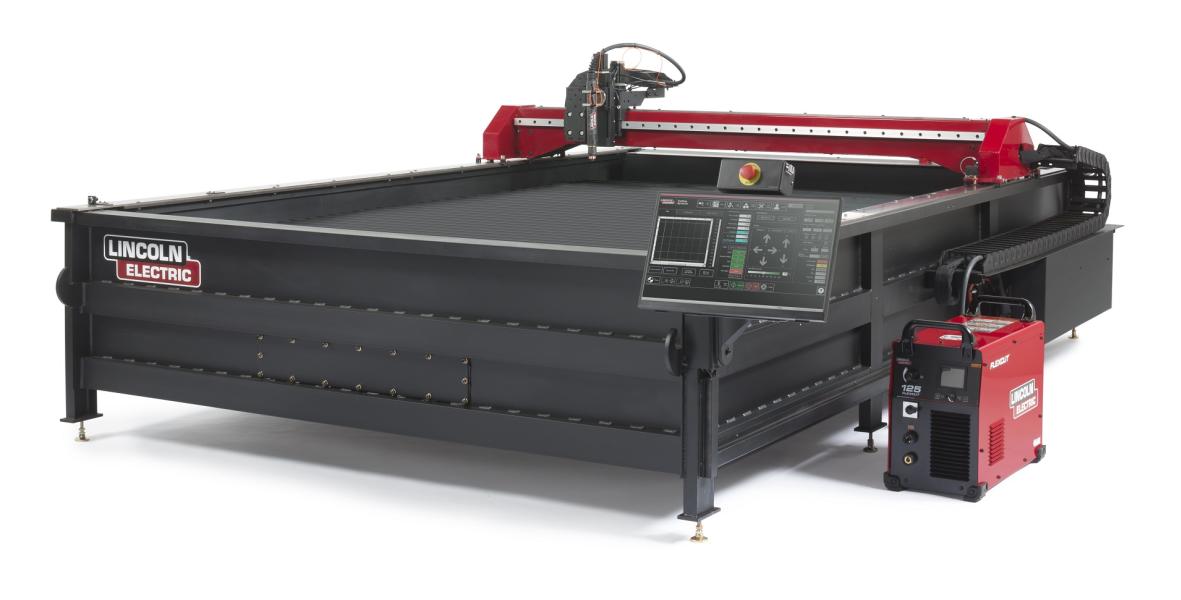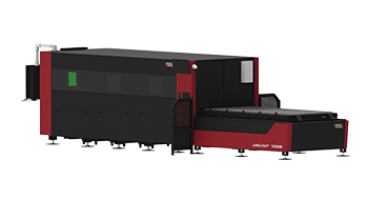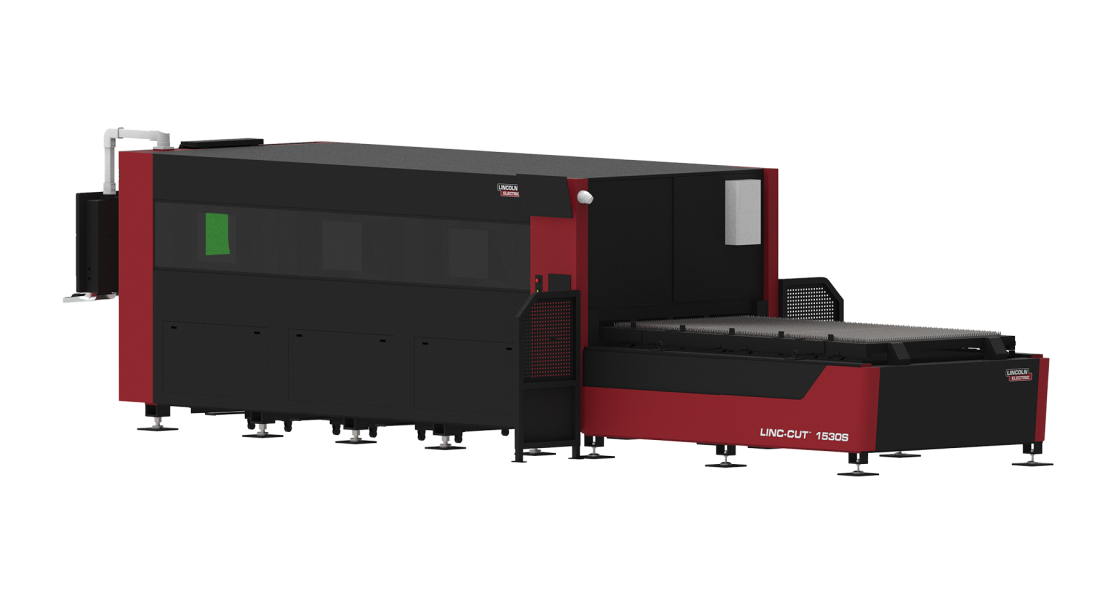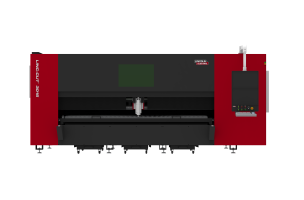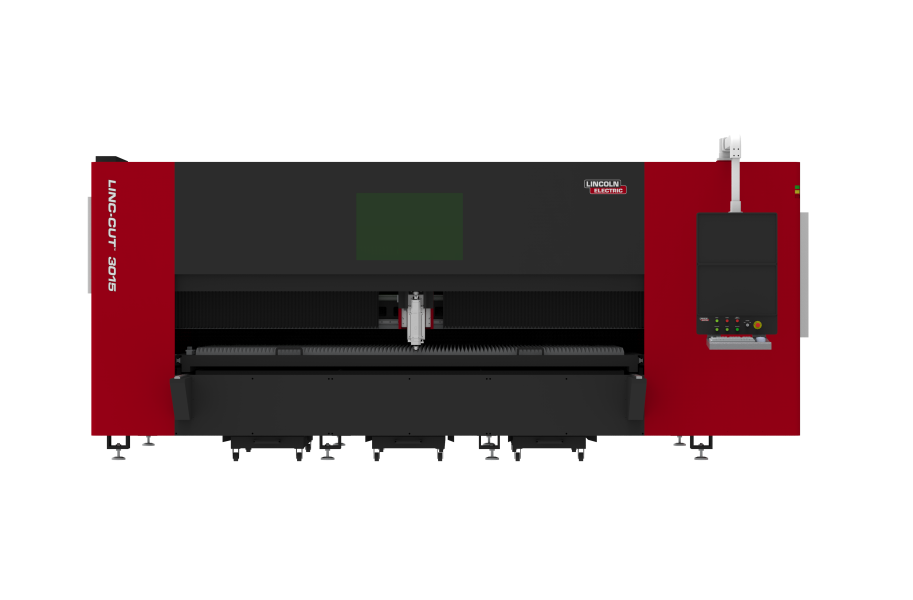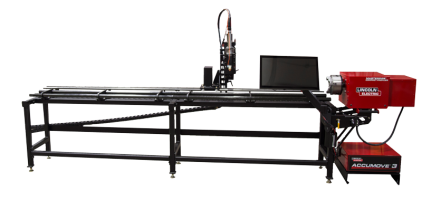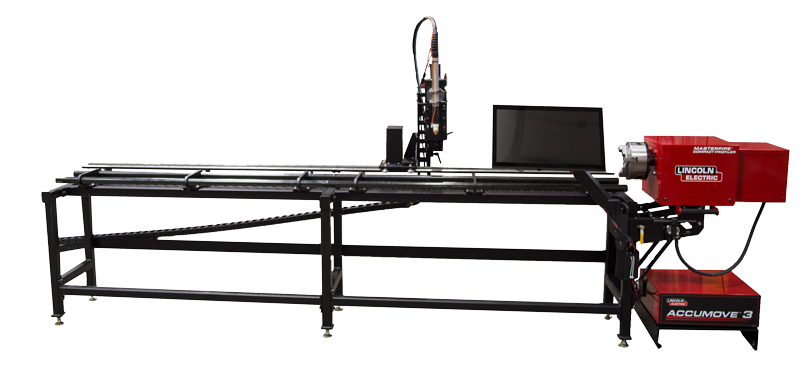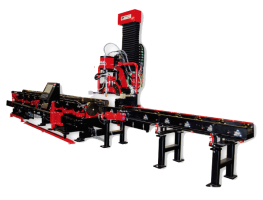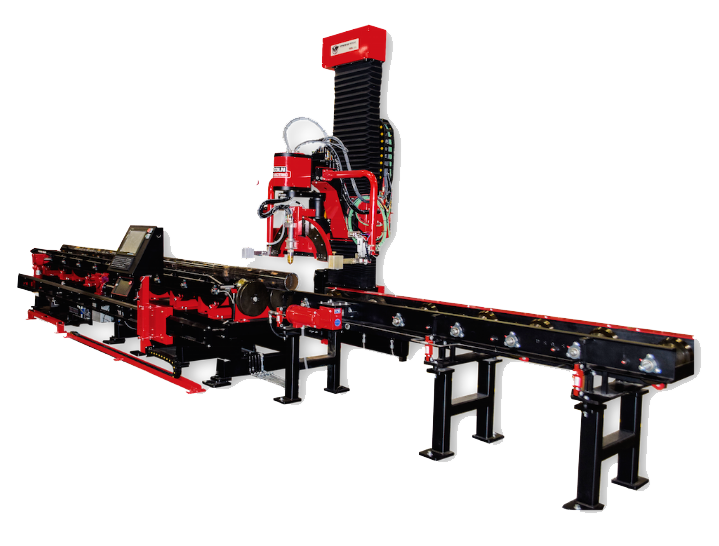Blue Display AVHC Troubleshooting
The Torchmate Arc Voltage Height Control issues generally arise from a setting being incorrect, the Set Voltage not calibrated correctly, the assembly being misaligned, or the ground not properly connected. Under normal operation the AVHC will perform the following functions:
1. When the torch is at a cut position the torch will travel down until the tip touches the material
2. Once the material is touched the torch will retract to the ‘Pierce Height’
3. The AVHC will then fire the torch.
4. At this point the AVHC will do two different actions depending on the setup. If an OK to Move signal is being used the AVHC will wait until this signal is received, if no signal is received the AVHC will go into a fault mode. If no OK to Move signal is being used the AVHC will wait the Pierce Delay time before proceeding to the next step.
5. After the OK to Move signal is received or the Pierce Delay is expired the AVHC will then move the torch to the Cut Height and if enabled will send the Pierce Complete signal to the signal generator.
6. At this point the signal generator will begin to move the table.
7. If in Manual mode the AVHC will not adjust as it travels but will stay at the Cut Height. If in Auto mode the AVHC will wait until the Sensing Delay elapses and then adjust, attempting to maintain the Current Voltage the same as the Set Voltage.
8. At the end of a cut the AVHC will shut off the torch and retract the tip about three inches from where it was traveling at.
9. The signal generator will then travel to the next cut and repeat the above steps.
Common AVHC Problems and Solutions
►If the AVHC attempts to move the torch tip down but retracts early or retracts immediately and tries to fire this indicates a higher than normal amount of resistance found along the assembly’s travel. The Touch Torque setting determines how much resistance the motor looks for before determining that it has reached the material. The first step in temporarily solving this problem is to increase the Touch Torque, do not increase this setting above 35. If the Touch Torque is set high and the issue still comes up decrease the Touch Torque back to its initial setting. Excessive Touch Torque is an indication of one of two things, alignment or build up. On a new AVHC the assembly will be clean so build up is not a factor but in the manufacturing and shipping process the two parallel rails that the assembly rides along can become misaligned. To adjust these rail loosen up the two plates on either end of the assembly so that the rails can be manipulated.

After aligning the rails if the AVHC still does not travel to the material or if the AVHC has been used for a while prior to this problem happening what may be causing the resistance is build up or dust on either the rails or screw that the AVHC moves along. To clean the AVHC begin by disassembling all of the components and lay them out on a clean towel. Clean each part with 3-in-1 oil or other light air tool oil, WD-40 or similar solvents should be avoided as they can corrode some components of the AVHC over time. Once all parts are cleaned reassemble the AVHC, ensure that the guide rails are parallel and that the screw can move the slide assembly freely just by hand turning the screw.
►If the table begins its motion before the plasma cutter has pierced this indicates an incorrect delay setting. Depending on how the AVHC is set up the delay will be changed in various places. If Pierce Complete is enabled then the delay setting will be in the AVHC under Pierce Delay. Increase this time until the machine pierces completely prior to moving the motors. If Pierce Complete is disabled the delay setting is changed in under Configuration > Programming > M-code Definitions, the delay is the Plasma On setting.
►While cutting in Auto mode the AVHC can rise up or dive into the material. If this occurs a common cause is the Set Voltage not being set to the correct value. Refer to the Test Cutting section steps on calibrating the Set Voltage. If the Set Voltage has been correctly established and the AVHC still fluctuates wildly ensure that the ground clamp is attached to the material. If the ground has a weak or intermittent connection with the material then the Current Voltage can fluctuate when it shouldn’t be.



